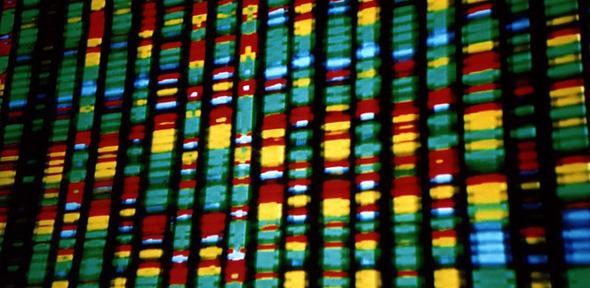
DNA representation courtesy of Andy Leppard
A rare DNA base, previously thought to be a temporary modification, has been shown to be stable in mammalian DNA, suggesting that it plays a key role in cellular function.
A new study published on 22 June in the journal Nature Chemical Biology, has found that a rare ‘extra’ DNA base, known as 5-formylcytosine (5fC), is stable in living mouse tissues. While its exact function is yet to be determined, 5fC’s physical position in the genome makes it likely that it plays a key role in gene activity.
"This modification to DNA is found in very specific positions in the genome – the places which regulate genes,” said the paper’s lead author Dr Martin Bachman, who conducted the research while at the Department of Chemistry. “In addition, it’s been found in every tissue in the body – albeit in very low levels.”
“If 5fC is present in the DNA of all tissues, it is probably there for a reason,” said Professor Shankar Balasubramanian of the Department of Chemistry and the Cancer Research UK Cambridge Institute, who led the research. “It had been thought this modification was solely a short-lived intermediate, but the fact that we’ve demonstrated it can be stable in living tissue shows that it could regulate gene expression and potentially signal other events in cells.”
The researchers believe that 5fC might alter the way DNA is recognised by proteins. “Unmodified DNA interacts with a specific set of proteins, and the presence of 5fC could change these interactions either directly or indirectly by changing the shape of the DNA duplex,” said Bachman. “A different shape means that a DNA molecule could then attract different proteins and transcription factors, which could in turn change the way that genes are expressed.”
“This will alter the thinking of people in the study of development and the role that these modifications may play in the development of certain diseases,” said Balasubramanian. “While work is continuing in determining the exact function of this ‘extra’ base, its position in the genome suggests that it has a key role in the regulation of gene expression.”
The research was supported by Cancer Research UK, the Wellcome Trust and the Biotechnology and Biological Sciences Research Council UK.
A longer article about this discovery can be found on the University of Cambridge research website.
